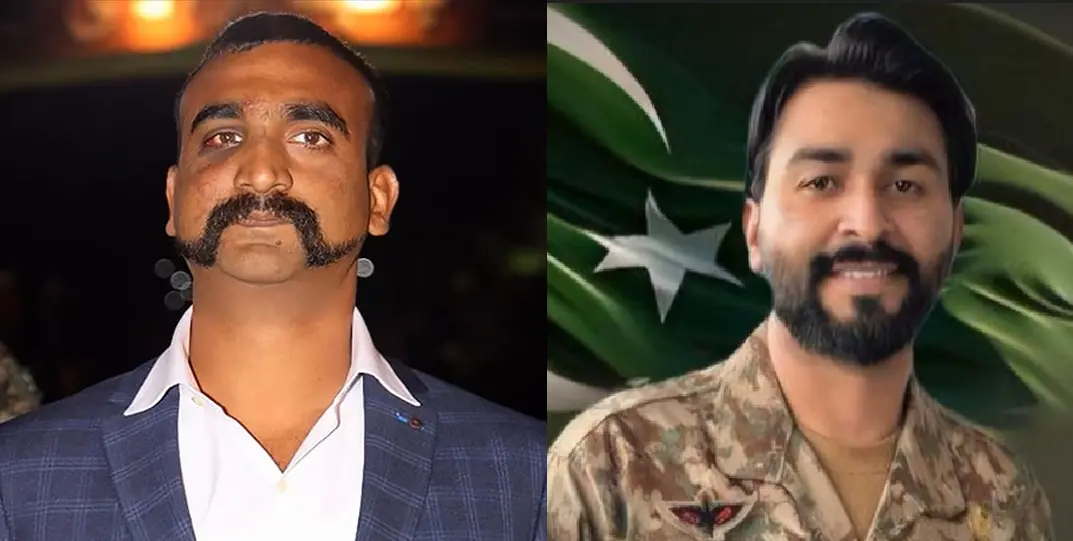
Major Moiz Abbas Shah, the Pakistan Army officer, his death marks a grim twist in Pakistan’s internal security crisis.
The Rise and Fall of a Pakistan Military Symbol
In 2019, following the Balakot airstrikes, the world watched with bated breath as tensions between India and Pakistan escalated into a full-blown aerial confrontation. Amid this high-stakes standoff, Indian Air Force Wing Commander Abhinandan Varthaman was captured after his MiG-21 Bison was shot down during a dogfight. The man who claimed credit for his capture was Major Moiz Abbas Shah, a 37-year-old officer from Pakistan’s elite Special Service Group (SSG).
Table of Contents
Shah quickly became a national figure in Pakistan, celebrated in state media and military circles as a symbol of tactical prowess. His image, standing beside a blindfolded Abhinandan sipping tea, became etched into the collective memory of both nations. But six years later, the same officer met a violent end, not at the hands of a foreign adversary, but in a firefight with militants from Tehreek-e-Taliban Pakistan (TTP) in South Waziristan.
A Fatal Encounter in South Waziristan
According to official reports, Major Shah was leading an anti-terror operation in the volatile South Waziristan region when his unit came under heavy fire from TTP insurgents. The operation, aimed at flushing out entrenched militants, turned deadly as Shah and another soldier, Lance Naik Jibranullah, were fatally shot.
The irony is stark. A man once celebrated for defending Pakistan’s borders against external threats was killed by forces that have long festered within the country’s own soil. The TTP, once allegedly supported by elements within Pakistan’s intelligence apparatus, has now turned its guns inward. In 2024 alone, over 1,200 Pakistani military and police personnel were killed in TTP attacks, and 2025 has already seen more than 100 casualties.
Shah’s death is not just a tactical loss, it’s a symbolic one. It underscores the growing threat of internal militancy and the shifting narrative of heroism in Pakistan’s military discourse.
The Legacy of Abhinandan and the Shifting Battlefield
Wing Commander Abhinandan Varthaman’s capture and subsequent release became a defining moment in Indo-Pak relations. His calm demeanor in captivity and dignified return to India earned him the Vir Chakra and widespread admiration. For Pakistan, the incident was used to project military competence and restraint. Major Shah, by claiming to have captured Abhinandan, became a central figure in that narrative.
But the battlefield has changed. The enemy is no longer across the border, it’s within. The TTP, formed in 2007, has evolved from a loosely organized insurgent group into a formidable threat, capable of launching coordinated attacks on military installations and personnel. Many of its leaders were once trained in camps allegedly supported by Pakistan’s own intelligence networks.
Major Shah’s death, therefore, is more than a casualty report, it’s a cautionary tale. It reflects the unintended consequences of decades of strategic ambiguity and the dangers of nurturing extremist elements for short-term geopolitical gains.
Conclusion:
The fall of Major Moiz Abbas Shah in an encounter with the TTP is a grim reminder of the shifting sands of security in South Asia. Once a celebrated figure for capturing an Indian pilot, Shah’s end at the hands of domestic militants reveals the deepening crisis within Pakistan’s borders. As the country grapples with rising internal threats, the legacy of its military heroes is being rewritten, not by foreign wars, but by the battles it must now fight at home.